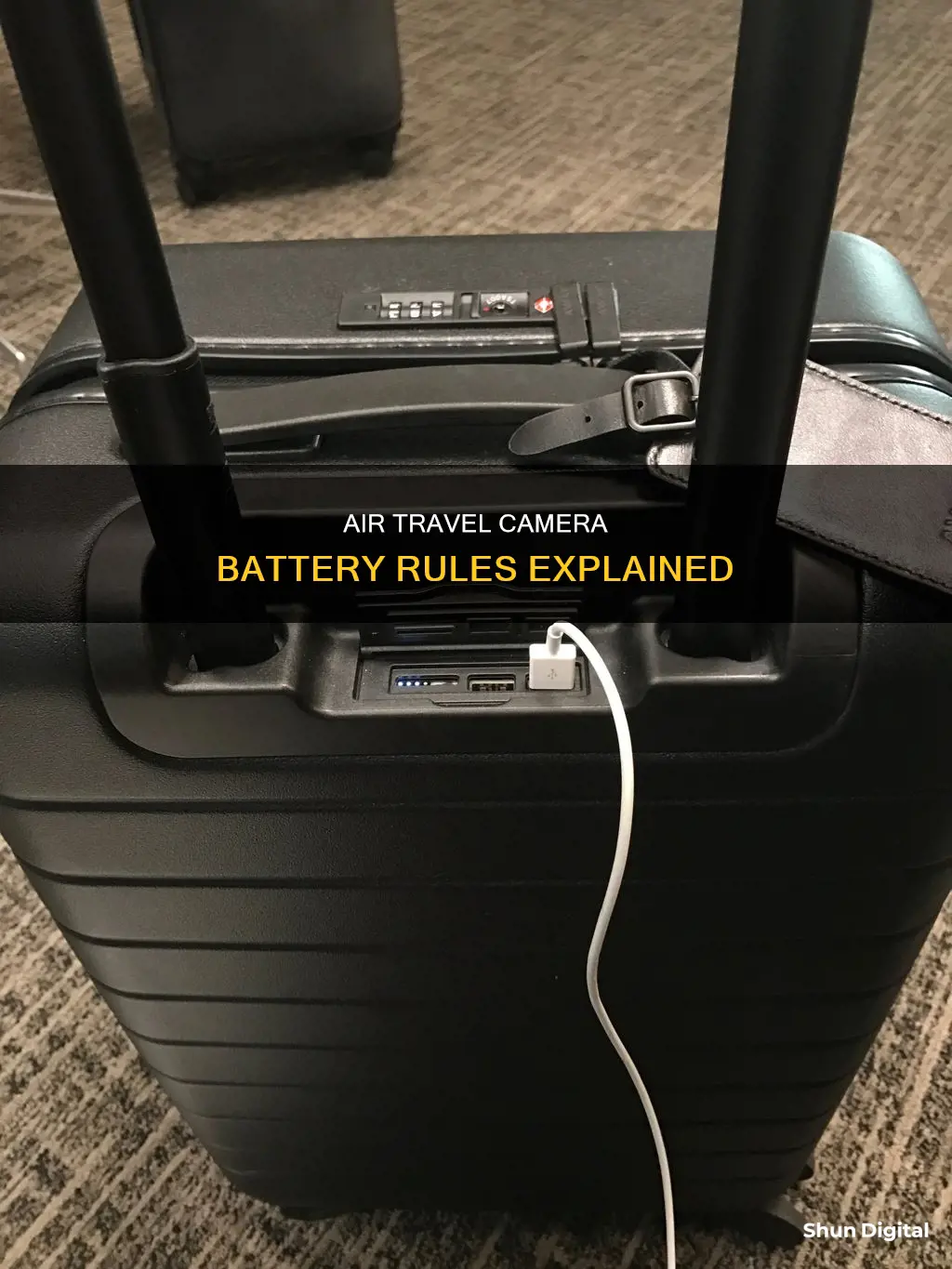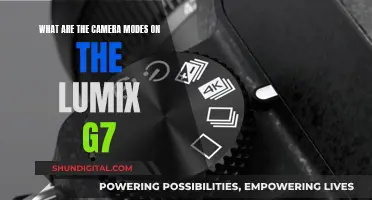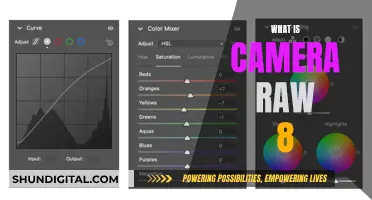
Camera batteries are allowed on planes, but there are specific rules in place to ensure safety. The rules are set by aviation authorities like the FAA and EASA, and they apply to both carry-on and checked luggage. Standard dry cell alkaline batteries (AA, AAA, C, and D) can be taken on board without restrictions, but lithium-ion batteries, commonly found in cameras, have stricter rules. All lithium-ion batteries must be carried in hand luggage, with a limit of two spare batteries per passenger. To prevent short circuits, battery terminals should be protected by taping over the charging interface or using the original packaging. It is also recommended to place batteries in separate bags. Playing by the rules will ensure your camera equipment is transported safely and securely.
| Characteristics | Values |
|---|---|
| Type of batteries allowed | Standard dry cell alkaline batteries (AA, AAA, C, and D) and lithium-ion batteries |
| Where to keep the batteries | Carry-on baggage |
| Quantity | No restriction on the number of standard dry cell alkaline batteries. Only 2 spare lithium-ion batteries are allowed. |
| Capacity | Lithium-ion batteries should be under 100Wh. With airline approval, passengers can carry up to two larger lithium-ion batteries (101-160 Wh). |
| Protection | The terminals of the batteries should be protected with tape or manufacturer's packaging to prevent short circuits. |
What You'll Learn

Lithium-ion batteries must be in carry-on luggage
Lithium-ion batteries are considered a hazardous material by the Federal Aviation Administration (FAA) and are therefore subject to specific rules and regulations. While it is possible to travel with these batteries, it is essential to follow the guidelines to ensure safety and compliance.
Firstly, it is important to note that lithium-ion batteries must be carried in carry-on luggage. This regulation applies to both installed and spare batteries. Installed lithium-ion batteries are those that are tucked away inside devices such as smartphones, laptops, tablets, and cameras. While these devices are generally considered safe, the FAA recommends keeping them in carry-on baggage. If they must be placed in checked luggage, it is crucial to turn them off completely, prevent accidental activation, and pack them in a way that protects them from damage.
Spare lithium-ion batteries, on the other hand, must always be carried in carry-on baggage. This is because lithium batteries have the potential for rapid combustion, and a fire in the cargo hold could go unnoticed and cause significant damage. By keeping these batteries in carry-on luggage, any potential fire can be quickly addressed by cabin crew and passengers.
To ensure the safe transport of lithium-ion batteries, it is important to take certain precautions. Firstly, make sure the batteries are in good condition and show no signs of damage, swelling, or leakage. Secondly, protect the battery terminals by using the manufacturer's packaging or covering them with tape to prevent short circuits. Additionally, it is recommended to place each battery in a separate bag for further protection.
It is also worth noting that there are restrictions on the number and capacity of lithium-ion batteries that can be carried. Each passenger is typically limited to two spare batteries, with a maximum of 2 grams for lithium metal batteries and 100 watt-hours for lithium-ion batteries. However, with airline approval, passengers may carry up to two additional larger lithium-ion batteries (101-160 Wh) or lithium metal batteries (2-8 grams).
In summary, when travelling with lithium-ion batteries, it is crucial to follow the regulations and guidelines set by aviation authorities. By keeping these batteries in carry-on luggage and taking the necessary precautions, you can help ensure a safe and smooth journey for yourself and your fellow passengers.
Restarting Li-ion Camera Battery: Quick Guide
You may want to see also

Tape over charging interface/connectors to prevent short circuits
When travelling with camera batteries, it is important to take precautions to prevent short circuits. Short circuits can cause batteries to overheat and potentially explode, releasing harmful substances. To prevent this, it is recommended to tape over the charging interface/connectors of the batteries. This will act as a physical barrier, preventing accidental contact between the positive and negative terminals.
Before taping the connectors, it is important to plan and organise your tools and equipment. Ensure that your work area is clear of any metal objects or jewellery that could create a short circuit. It is also advisable to use insulated or non-metallic tools when working with batteries. If insulated tools are not available, wrapping the handles with electrical tape can provide an additional layer of protection.
When taping the charging interface/connectors, use a suitable type of tape that will effectively insulate and protect the terminals. Electrical tape or simple plastic tape can be effective options. Completely cover the terminals, ensuring no part of the connector is exposed. This will prevent accidental contact with other metal objects and reduce the risk of a short circuit.
It is also recommended to place each battery in a separate bag or container. This provides an additional layer of protection and ensures that the taped connectors are not disturbed. By following these precautions, you can help ensure the safe transport of your camera batteries and reduce the risk of short circuits during your travels.
Additionally, it is worth noting that lithium-ion batteries, commonly found in cameras, have specific regulations for air travel. These batteries are generally considered safe if installed inside cameras and can be carried in carry-on baggage. However, it is recommended to keep them in carry-on baggage and take precautions to prevent accidental activation and damage. For uninstalled or spare lithium-ion batteries, it is crucial to carry them in your carry-on baggage to ensure they remain within reach and reduce the risk of fire.
Lithium-ion Camera Batteries: Safe Air Travel Tips
You may want to see also

Only two spare lithium-ion camera batteries allowed on the plane
When travelling by plane, it's important to know the rules about what you can and can't bring on board. Lithium-ion camera batteries are allowed on planes, but there are some restrictions. Here's everything you need to know about only being able to bring two spare lithium-ion camera batteries on the plane.
Firstly, it's crucial to understand the difference between installed and spare lithium-ion batteries. Installed lithium-ion batteries are those that are tucked away inside your camera, smartphone, laptop, or tablet. These are generally considered safe and can be brought on board without any issues. However, if you're packing devices with installed lithium-ion batteries in your checked luggage, it's recommended to turn them off, prevent accidental activation, and pack them securely to avoid damage.
On the other hand, spare lithium-ion batteries are those that are uninstalled and separate from your devices. These batteries have specific rules that you need to follow. According to the Federal Aviation Administration (FAA), spare lithium-ion batteries must be carried in your carry-on baggage. This is because lithium-ion batteries have the potential for rapid combustion, and a fire in the cabin can be more easily addressed than one in the cargo hold.
Now, let's focus on the quantity restriction. Each passenger is limited to bringing only two spare lithium-ion camera batteries on the plane. This restriction is in place to ensure safety and reduce the risk of fire. These two spare batteries should not exceed 100 watt-hours per battery. Additionally, it's important to protect the battery terminals from short circuits by using the manufacturer's packaging or covering the terminals with tape.
It's also worth noting that standard dry cell alkaline batteries, such as AA, AAA, C, and D, are not subject to the same restrictions. You can bring any quantity of these batteries in your carry-on or checked luggage without worrying about the two-battery limit. However, always make sure to protect them from damage and accidental activation, as advised by the Transportation Security Administration (TSA).
In conclusion, when travelling by plane, you are only allowed to bring two spare lithium-ion camera batteries on board. By following these rules, you can ensure a safe and smooth journey for yourself and your fellow passengers.
Simplisafe Camera Battery: Charging Time Explained
You may want to see also

Tape up metal contacts on batteries to prevent short-circuiting
When travelling with camera equipment, it's important to be aware of the rules and safety guidelines surrounding batteries. Most standard dry cell alkaline batteries, such as AA, AAA, C, and D, can be brought on board without restrictions. However, lithium-ion batteries, commonly found in cameras, smartphones, laptops, and tablets, require special consideration due to their potential for rapid combustion. These batteries should always be carried in your hand luggage and protected from damage and short-circuiting.
To prevent short circuits, which can lead to dangerous overheating and combustion, it is crucial to protect the battery terminals. Tape can be used to cover the metal contacts of batteries and prevent accidental contact between the positive and negative terminals. Here are some detailed instructions on how to properly tape up metal contacts on batteries to ensure a safe journey:
- Choose the Right Tape: Select a type of tape that is insulating and non-conductive. Electrical tape or clear sticky tape are good options. Avoid using metallic tapes, as they can defeat the purpose and create a potential fire hazard.
- Clean the Battery Terminals: Before applying the tape, ensure that the battery terminals are clean and free from dirt, grease, or any other debris. This helps ensure a secure and effective seal.
- Cut the Tape to Size: Cut the tape to fit the size and shape of the battery terminals. You want to cover the terminals completely without leaving any exposed metal areas. For smaller batteries, you may need to cut the tape into thin strips.
- Apply the Tape: Carefully place the tape over the metal contacts, ensuring that it covers all exposed metal. Smooth out any air bubbles and press the tape firmly in place.
- Double-Check Your Work: After applying the tape, inspect the battery to ensure that all metal contacts are completely covered. If you notice any gaps or exposed areas, apply additional tape as needed.
- Store Batteries Safely: Always store taped batteries in a safe and secure manner. Keep them away from metal objects, heat sources, and children. Place them in a separate bag or container to avoid accidental contact with other items.
By following these steps, you can help prevent short-circuiting and reduce the risk of fire or other safety hazards during your flight. Remember to also adhere to other battery-related guidelines, such as keeping lithium-ion batteries in your carry-on luggage and ensuring they are installed in your devices or stored separately in approved battery cases.
Charging Your Hover Camera: Battery Basics
You may want to see also

Damaged batteries must not be brought on the plane
Lithium-ion batteries are commonly found in camera equipment, and while they are generally considered safe, they do pose a recognised risk of combustion. Because of this, there are strict rules in place regarding their transportation on planes.
The US Federal Aviation Administration (FAA) states that damaged, defective, or recalled lithium batteries must not be brought onto a plane. This includes in carry-on or checked baggage, if they are likely to be a safety concern by overheating or catching fire.
The FAA further advises against bringing such batteries on board, stating:
> "Damaged, defective or recalled lithium batteries must not be carried in carry-on or checked baggage if they are likely to be a safety concern by overheating or catching on fire."
This is because lithium-ion batteries have a tendency to overheat and can cause smoke, fire, and extreme heat. This generally occurs in units that are damaged or defective but can also be caused by various other factors, such as overcharging or short-circuiting.
To prevent short circuits, it is important to protect the battery terminals when transporting lithium-ion batteries. This can be done by using the manufacturer's packaging or covering the terminals with tape. It is also recommended to place the batteries in separate bags to ensure further protection.
It is worth noting that different countries and airlines may have their own specific rules and regulations regarding the transportation of lithium-ion batteries. Therefore, it is always a good idea to check with the relevant authorities and organisations before travelling.
Rapid Charging: Powering Your Camera in a Flash
You may want to see also
Frequently asked questions
Standard dry cell alkaline batteries (AA, AAA, C, and D) can be taken on planes without restrictions. Lithium-ion batteries, commonly found in smartphones, laptops, and camera equipment, have specific rules that must be followed.
Lithium-ion batteries should be placed in carry-on luggage. The FAA states that "Devices containing lithium metal batteries or lithium-ion batteries...should be kept in carry-on baggage."
There is no limit to the number of small dry cell batteries you can bring. However, each passenger is only allowed to bring two spare lithium-ion camera batteries on the plane.
Lithium-ion batteries under 100Wh are typically allowed. With airline approval, passengers may carry up to two larger lithium-ion batteries (101-160Wh).
To prevent short circuits, protect the battery terminals by using the manufacturer's packaging or covering the terminals with tape. It is also recommended to place batteries in separate bags for added protection.







